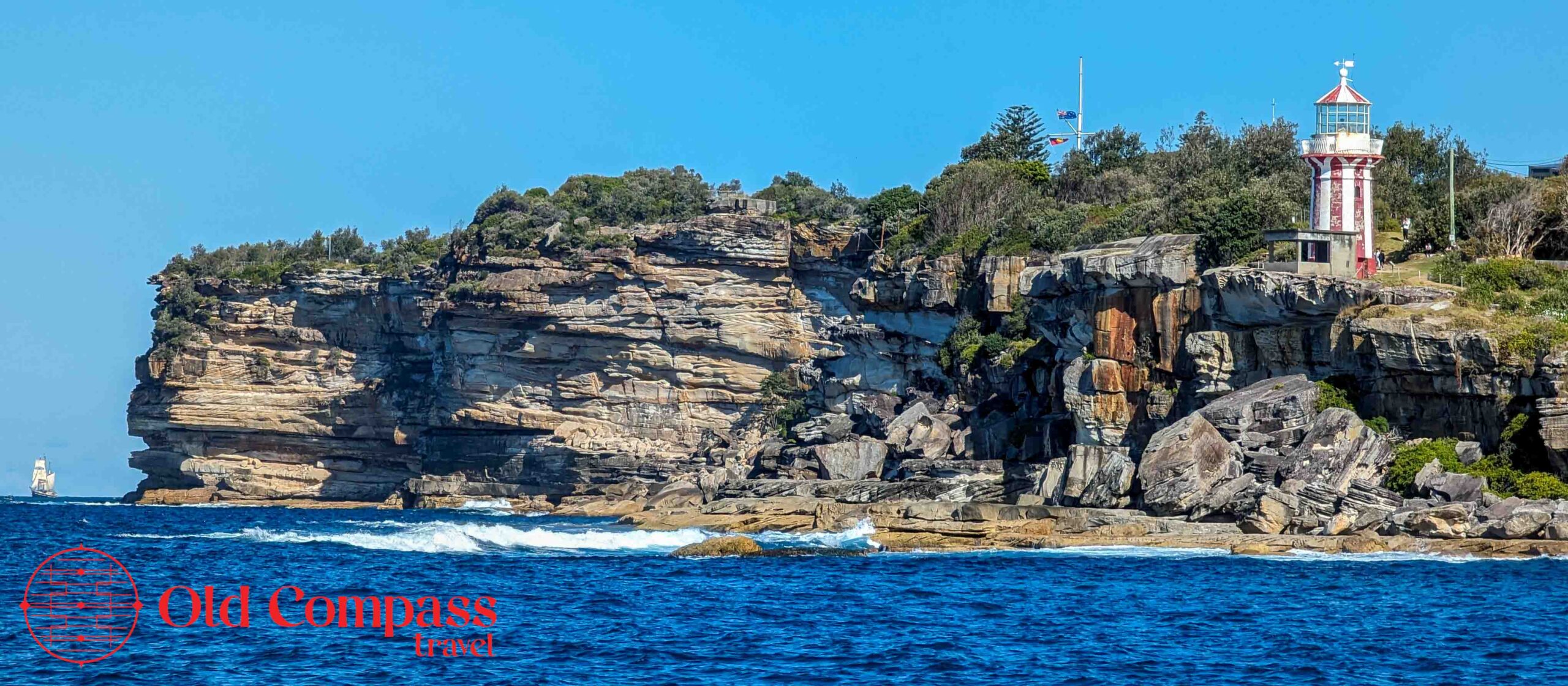Sydney’s South Head – history from the Manly Ferry
Historic Camp Cove – and Sydney’s stunning harbour
© Mark Bowyer
Historic Camp Cove – and Sydney’s stunning harbour
© Mark Bowyer
Home / Old Compass Travel cultural travel blog / Sydney’s South Head – history from the Manly Ferry
Visitors to Sydney crossing the harbour on the Manly Ferry will spot historic views, barely changed in centuries. In January 1788, some of the earliest contact between the British colonial invaders and Sydney’s First People, occurred here. And much more.

For well over a century after the British colonised Sydney in 1788, everybody arriving in the colony from abroad passed this place, South Head. It’s the dramatic gateway to Sydney’s stunning harbour. Until 1840, the bulk of those arrivals were convicts – the refuse of Britain’s criminal justice system.
The scene has barely changed since my own forebears gazed across it. Those I’m aware of, arrived over decades from the 1820s. I can only imagine the relief and apprehension they must have felt after long and perilous journeys to Sydney from Ireland and England.
The convicts and their masters were followed by whalers, traders, gold seekers, soldiers and other settlers. After World War II, refugees and immigrants fleeing war-torn Europe must have taken comfort from the sight of these sandstone cliffs.
For all of those who passed here, carrying fear, hope, terror, relief, this view signalled an irrevocable break with the past – the end of a long and often brutal journey and the beginning of something new.
For at least 30,000 years before invading ships began to arrive, First Nations people lived and flourished around this place. Their presence dates back so far, that it pre-dates the sea level rises that created the harbour. When the first Indigenous clans wandered these parts, the ocean was dozens of kilometres away.
British officials originally intended that the penal settlement in New South Wales should be located at Botany Bay – where Sydney’s international airport is located today.
On his 1770 voyage aboard the Endeavour, Captain James Cook mapped this coast for the first time and put down anchor in Botany Bay. He and his fellow travellers believed it would be suitable for settlement.
18 years later, Captain Arthur Phillip, the First Fleet’s commander, determined that Botany Bay could not sustain the new colony he was commissioned to establish. Using Cook’s maps, Phillip headed north with some of his officers in small boats seeking an alternative location.
Phillip noted Cook’s reference to Sydney Harbour. Cook didn’t pass through these heads. Phillip and his men became the first Europeans to pass through here.
They spent a night at Camp Cove, a short walk from the lighthouse in the picture, before taking the decision to relocate the eleven ships of the First Fleet to Sydney Cove.
From the outset, the spectacular beauty of the harbour was noted by Phillip and his men.
Sydney’s worst maritime disaster
The red striped Hornby Lighthouse at South Head was built in 1858, following Sydney’s worst maritime disaster.
After months at sea, bringing many hopeful new settlers from England, the Dunbar was wrecked on these rocks in a wild storm on 30 August 1857. 121 of 122 passengers and crew perished.
Just imagine, 5 months at sea, dreaming of Sydney, only to die at the end of the journey, entering the harbour….
If you’re exploring Sydney history in depth, you may wish to visit the Camperdown Cemetery in Newtown. It’s one of Sydney’s best colonial-era cemeteries and contains the mass grave of the victims of the Dunbar tragedy.
This is a video I shot at Camperdown Cemetery.
This video is from our Rusty Compass travel guide to Camp Cove and Watson’s Bay (see below).
Check out our Sydney walks and experiences of history and beautiful places at Old Compass Travel
2025 is a year of big anniversaries in Vietnam. Saigon recently marked the end of decades of war with parades and fireworks. In September, the celebrations will move to Hanoi.
...moreCultural travel ideas from our travel guides over at Rusty Compass. Our videos feature museums, walks, cycling, architecture and more. Check out our blog on Sydney beyond the harbour.
...more© Copyright Six Degrees Asia Limited 2025